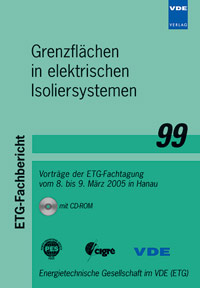Round Robin Test for the Evaluation of the Hydrophobicity Transfer Ability of Polymeric Insulating Materials
Konferenz: Grenzflächen in elektrischen Isolierstoffen - ETG-Fachtagung
08.03. - 09.03.2005 in Hanau
Tagungsband: Grenzflächen in elektrischen Isolierstoffen
Seiten: 6Sprache: EnglischTyp: PDF
Persönliche VDE-Mitglieder erhalten auf diesen Artikel 10% Rabatt
Autoren:
Exl, Florian; Kindersberger, Josef (Lehrstuhl für Hochspannungs- und Anlagentechnik, TU München, Deutschland)
Bärsch, Roland (Fachgebiet Hochspannungstechnik, Hochschule Zittau / Görlitz (FH), Deutschland)
Gerdinand, Frank (Institut für Hochspannungstechnik und Elektrische Energieanlagen, TU Braunschweig, Deutschland)
Inhalt:
Some polymeric insulating materials have the ability to transfer its hydrophobicity through pollution layers. To evaluate this ability several methods can be found in corresponding literature. But the compounds for the pollution layer and the methods of applying it onto samples differ significantly and so the results cannot be compared to each other. A working group in Germany investigated a method to evaluate the hydrophobicity transfer ability of polymeric insulating materials by applying artificial pollution layers made of silica powder in an easily feasible and reproducible way and measuring the contact angles at several times after the layer application. Such a method, which should also be suitable for international standardization, requires an exact specification of the components in the pollution layer and its application onto the samples. Therefore the influence of several parameters like treatment and grain size of silica powder on the resulting pollution layer has been investigated. A method which allows to determine the progression from the hydrophilic state to a complete hydrophobicity transfer within a relatively short period of time by measuring contact angles is described. The results of round robin tests with the proposed test procedure will be presented.


